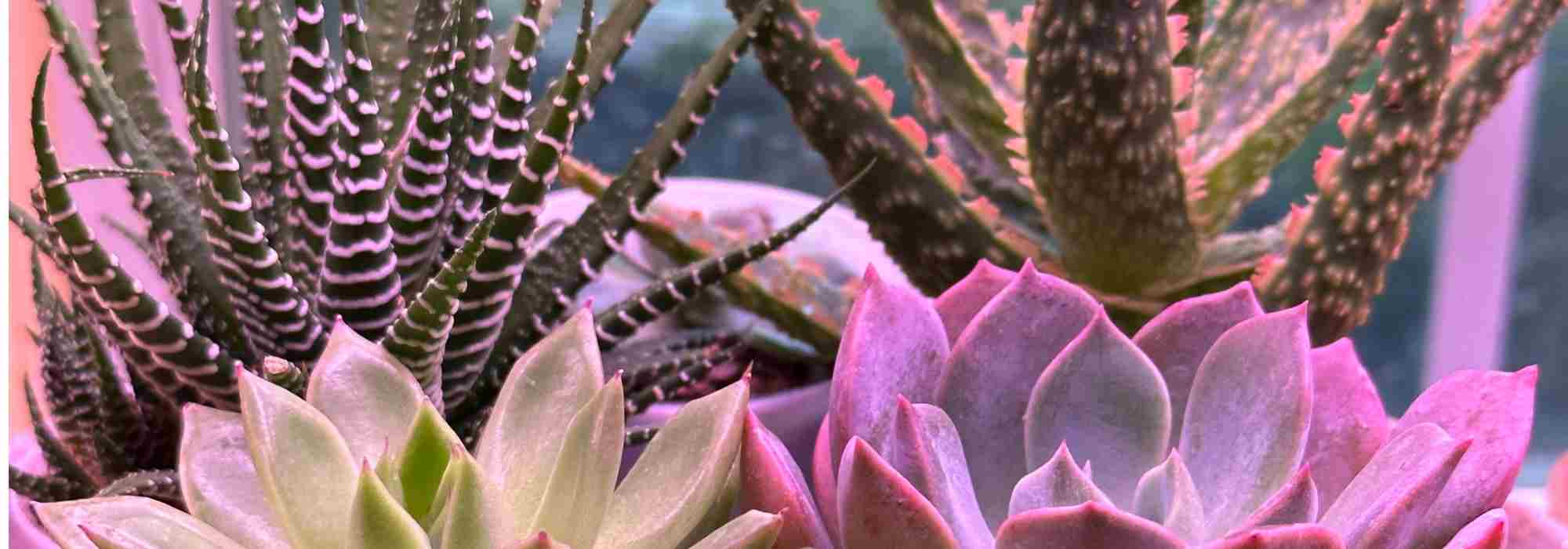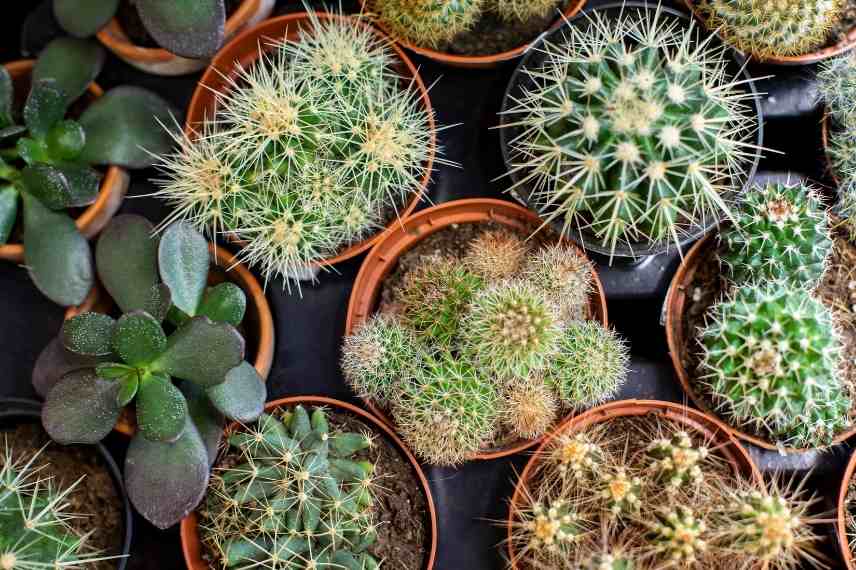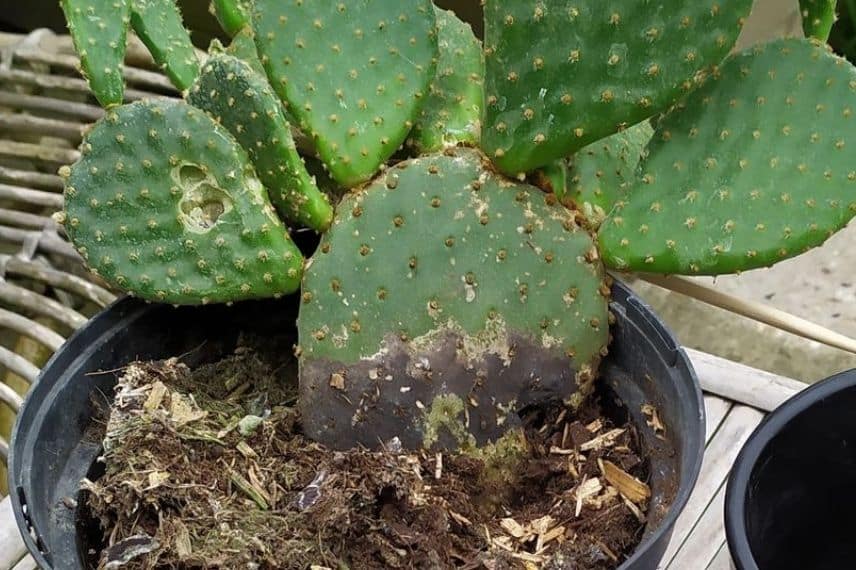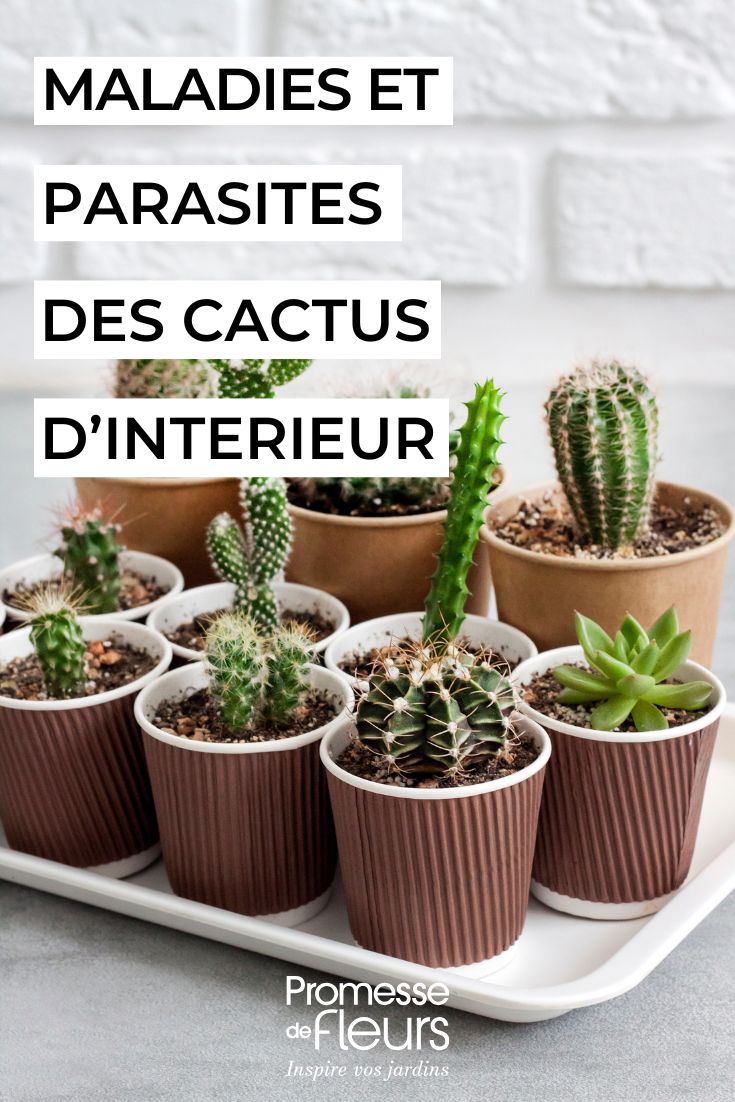
Diseases and Parasitic Pests of Indoor Cacti: How to Treat and Prevent Them?
Understanding symptoms, adapting treatments and preventing diseases and parasitic infestations
Contents
Undeniably, cacti are indoor plants, renowned for their robustness, their ability to withstand drought, survive in extreme conditions and make do with very little. However, in our latitudes, growing them indoors does not shield them from troubles. Quite the contrary: confinement, excessive humidity, lack of light or unsuitable substrate create favourable conditions for physiological imbalances, parasitic attacks and the development of fungal or bacterial diseases.
Faced with these issues, the attentive gardener must not only know how to identify warning signs. They must understand the causes, master preventive measures and adapt their cultivation to the specific requirements of these plants, most of which originate from desert or semi-arid environments.
Discover the best cultivation practices, the most common diseases and parasites of indoor cacti, as well as practical ways to prevent them and maintain healthy, vigorous and long-lasting plants.
To go further: Cacti and Succulents for Indoors: Growing and Caring for Them
How to properly grow your indoor cacti?
Gymnocalycium, Echinopsis, Mammilaria, Astrophytum, Echeveria, Ferocactus, Parodia, Opuntia… All these indoor cacti require more care than meets the eye. These plants, often originating from arid and semi-desert regions, have evolved to withstand extreme conditions, but this adaptation can sometimes become a drawback in confined spaces where growing parameters can quickly go awry.
The first requirement concerns light. Most cacti are sun-loving. Without direct light for several hours a day, their metabolism slows down, growth becomes etiolated, and tissues weaken. A south or west-facing window is generally recommended, with light filtering in summer if the rays scorch young tissues. Insufficient light is one of the primary factors encouraging the appearance of fungal diseases.
The substrate must be strictly free-draining. A special cactus compost is ideal, but a mix of repotting compost, sand and vermiculite suits most species. Even brief water stagnation is enough to cause root stress and open the door to opportunistic pathogens. Unglazed terracotta pots are preferable to plastic containers, as they allow better aeration and moisture evaporation.
Watering must be sparing, in sync with growth cycles. During the growing season (spring-summer), watering every 8 to 15 days, depending on the species, may be justified, but only if the substrate has dried out thoroughly. In autumn, gradually reduce watering until stopping completely in winter, except for some non-dormant tropical species.

Indoor cacti require more care than meets the eye
Strict wintering in a cool room (5 to 10°C), bright and free from humidity, is essential to allow cacti to enter their winter dormancy phase and potentially prepare for flowering.
Finally, ventilation plays an often underestimated role. Stagnant air in an overheated room creates an ideal breeding ground for mould and pest insects. Regularly opening windows, even briefly, and avoiding confined areas (like poorly ventilated conservatories) helps maintain a favourable sanitary balance.
Read also
How to water a cactus?What are the most common diseases of indoor cacti?
Despite their reputation for resilience, indoor cacti can be susceptible to several diseases, most often fungal, sometimes bacterial in origin, very rarely viral, but frequently linked to cultivation errors.
Brown Root Rot
Root rot, often caused by fungi of the genus Pythium, Rhizoctonia, or Phytophthora, is the primary scourge. It develops in waterlogged soil and attacks the collar of cacti. The roots turn light brown to black, become soft, and can no longer absorb water, leading to paradoxical wilting of the aerial tissues as the rot quickly spreads upwards. Severe infestations are difficult to treat.
What to do?
- Dig up the cactus and remove affected parts using a razor blade or craft knife
- Treat with black charcoal powder
- Replant in fresh, completely dry substrate.
Soft Rot
Caused by the bacterium Erwinia, this soft rot manifests as rapid tissue softening with foul-smelling ooze. Progression is usually swift. At this stage, saving the entire plant is unlikely. Taking healthy offsets and growing them in quarantine is sometimes the only solution.

The base of the cactus turns black: no doubt, it’s wet rot or soft rot
Powdery Mildew
Tissues, often attacked near the base of the cactus, become covered in a whitish, powdery layer. Affected areas turn brown and rot. The plant collapses sideways. This disease mainly develops in spring and autumn when the substrate is too moist.
What to do?
- Spray with Bordeaux mixture or a natural fungicide like garlic decoction
- Reduce humidity around the cactus by temporarily stopping watering and improving air circulation
Brown or Black Spots on Stems
This is a common disease in cacti, again caused by excessive humidity and watering. The spots are often circular, slightly sunken, and sometimes surrounded by a lighter halo. The stems deteriorate, soften, and collapse.
What to do?
- Remove the cactus from its pot
- Cut away affected parts with a sterilised craft knife or razor blade
- Let the plant dry for a day in a dry, well-ventilated room
- Replant the cactus in fresh, well-draining substrate.
Which parasites commonly attack indoor cacti?
Indoor cactus pests are few but formidable. They often take advantage of physiological weakness or an overly favourable microclimate.
Mealybugs
These are the most common parasites. They hide in the crevices of stems or at the collar, often invisible at first. White, cottony clusters betray their presence. They feed on sap, weakening the cactus. They are difficult to eradicate, as they are protected by a waxy layer.
What to do? Manual treatment with 70° alcohol using a cotton bud, followed by regular sprays of black soap, is effective. The treatment can be repeated after 15 days if necessary.
Spider Mites
Red spider mites appear mainly in dry, warm conditions. Invisible to the naked eye, they cause a dusty appearance, loss of turgor, and sometimes a rusty discolouration of tissues. Wooly or thorny cacti mask their presence.
What to do?
- Isolate your cactus
- Humidify the surrounding air and spray your cactus with non-calcareous water.
Root Aphids
In winter, the cactus takes on a sickly, yellowish appearance. The ribs shrivel, and the spines become weak. When repotting, aphids can be seen sucking sap from the roots.
What to do?
- Repot the cactus
- Clean the roots with a brush
- Wash the root system with water mixed with black soap
- Let it dry for a day and repot in fresh substrate.
Aphids
Green or greyish aphids crawl in the hollows of the ribs, leaving puncture marks. They feed on sap, causing tissues to yellow.
What to do? Spray a solution of water, black soap, and oil.
What preventive measures can be taken to avoid diseases and parasitic attacks?
Prevention relies primarily on rigorous cultivation hygiene, respecting growing conditions and careful observation of the plants.
- Sanitising equipment is essential. Reused pots should be scrubbed and disinfected with diluted bleach. Tools must be sterilised with alcohol before use to avoid cross-contamination.
- The choice of substrate should never be left to chance.
- It is important to avoid any excess nitrogen fertiliser, which promotes overly rapid tissue growth, making them more susceptible to fungal attacks. A cactus fertiliser, lightly dosed and applied once or twice during active growth periods, is sufficient.
- Watering should never be excessive.
- Rooms where cacti are kept should be ventilated very regularly to refresh the air.
- If possible, in summer, it is recommended to place cacti outdoors in sunlight, but in a spot sheltered from harsh weather. Watering should continue regularly.
- When purchasing a new cactus, it should be isolated from the rest of the collection for two to three weeks to detect any diseases or parasites.
- Regular inspection of cacti allows for early intervention. Hidden parts of the collar, folds between the midribs, or woolly stem bases should be checked with a magnifying glass. Any colour changes, abnormal wilting, or suspicious presence should raise concern.
- Subscribe!
- Contents
































Comments